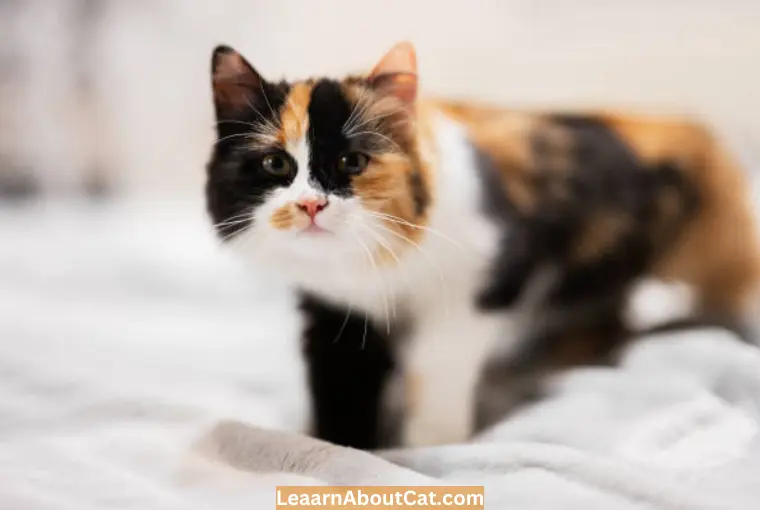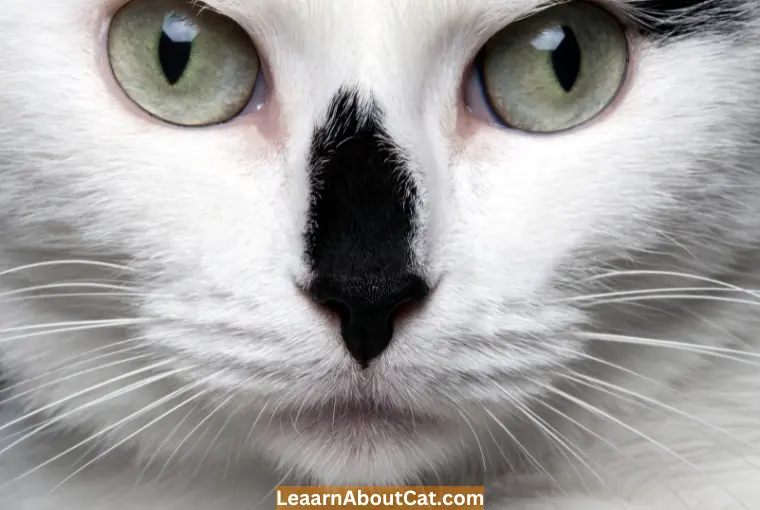Why is My Cat’s Nose Changing Color? [Explained]
If you’re a cat owner, you may observe that its nose periodically alters its colour. You may also notice a major shift, or it may alter a few shades to brighter or darker compared to their typical colour. Why is my cat’s nose changing color?
A cat’s nose is filled with small blood arteries, then ours. Under some circumstances, these capillaries can swell and shrink, giving the impression that their nose is changing colour. The nose of a chilled cat will probably constrict, appearing bright pink. But, the arteries may enlarge if a cat’s heart rate increases. You’ll probably notice that certain felines’ noses turn black or white, too, which may indicate some circulatory blood disease.
If you’re worried about your feline’s health, then it’s certain that you’ve questioned these alternating nose colours. For your convenience, in this article, I’ve mentioned every detail about the reasons behind changing the colours of cats’ noses and much more!

What Causes A Cat’s Nose to Change Color?
There isn’t a specific shade for a cat’s nose. Some felines have dark noses, whereas others possess brilliant pink ones. The various causes of a cat’s nose changing colour are as follows:
1. Lentigo
When felines grow older, their facial skin gets more wrinkles, known as lentigo. The benign type of lentigo occurs mostly in cats. Firstly, they start around the mouth area and then spread to the cat’s nose. So, when cats become becomes aged, their noses will turn black. Lentigo mostly occurs in cats with orange furs, increasing with age; it’s quite natural!
2. Bleeding or Hematoma
Bruising may be the reason for a cat’s nose turning black. Cats don’t bleed visibly; however, hematomas under their skin may develop. It forms when a tiny blood vessel bursts underneath the nose skin.
Collisions are frequently cited as the cause of cat nose hematomas. The cat might have bumped into furniture or a tree, or perhaps it fights with another cat.
3. Staining
Your cats also change their nose colour if it gets stained. Cats use odour to navigate the world; therefore, it’s possible that they cover their noses in food containing dyes and pigments. You can easily remove the pigments by gently wiping their nose with a moist cotton pad.
4. Allergies
Allergies also make a cat’s nose thicker and more hyperpigmented. Your cat exhibits additional signs, like:
- Sneeze and cough
- Breathing difficulty
- Inflammatory acne
- Blemishes or hive outbreaks
- Diarrhoea and gagging
The most frequent cause of allergic responses in cats is foodstuff, but environmental factors may also react your cats.
5. Arousal and Stimulation
When cats become over-excited, the blood flows towards the head, due to which cats’ nose becomes darker. The nose will change to its original, light colour after the cat calms down. If this doesn’t happen, it might be in a hypertensive situation.
6. Reduced blood flow
The cat’s nose also becomes lighter because of bad blood vessel circulation, making its nose pale or white.
7. Anemia
In this situation, the body doesn’t have enough RBCs to transport oxygen to the blood, which causes pale-coloured noses. Potassium deficiency causes this disease and can be treated by giving potassium-containing meals, pills, or IV fluids.
8. Vitiligo
Leukotrichia, often known as vitiligo, is an uncommon illness that causes a cat’s skin to become unpigmented. It frequently begins at the nose tip and progresses to other parts of the body, creating white or pink patches that appear to be randomly placed. Stress and discontent can both induce and worsen vitiligo.
9. Sun Burns
Many cats love to take sun baths, but the sun burns their noses and makes them dark. Moreover, light-coloured nose burns more quickly than darker ones.
10. Dehydration
A cat’s nose also seems pale if it’s dehydrated. It’s one of the most common reasons for a white nose in felines.
Also, Read: How to Get Your Cat to Drink More Water
11. Diabetes
Dehydration in felines with diabetes may result in their noses turning pale. Chronic diabetes in cats frequently causes a rise in thirst and urine.
Can A White Cat Have A Black Nose?
Yes, black noses are somehow possible in white cats. A cat’s nose typically matches the colour of its coat. When a cat grows, the colour of its nose may also alter.

Most white cats have pink noses, but white cats having black noses is unique and is caused by several factors, such as:
- Lentigo
- Sunburn
- Age
- Cushing disease
- Bad blood circulation
Why Does My Cat’s Nose Change From Pink to White?
Pink-nosed felines usually have light-coloured fur because their body has less pigment; therefore, their noses are light-coloured. But if your pink nose cats suddenly turn their noses to pale or white colour, then this can be a sign of some illness, such as:
- Anaemia
- Dehydration
- Cats leukaemia
- Hypothermia
- Diabetes
- Skin cancers
Why Is My Cat’s Black Nose Turning Pink?
Felines also change their nose colour from black to pink due to their old age. When black cats get older because their body stated to lose pigments; thus, their noses turn pink. Moreover, in some cases, their entire nose becomes pink, or it may get pink dots.
However, black cat pink nose is rare; if it happens, it might be some birth defect in kittens.
Why is My Cat’s Nose Turning Black?
Felines change their nose colours throughout their lifetime; sometimes, it happens randomly. The most common colour that you may notice in your cats’ noses is black, and it’s due to a variety of reasons, such as:

- Lentigo
- Hematoma
- Exposure to the sun
- Food staining
- Hyperpigmentation
You must call your vet if your feline has light furs and suddenly changes its nose to black.
Should You Ever be Concerned About Your Cat’s Nose Changing Colour?
A feline’s nose colour variation is typically nothing to worry about. But, if you detect a sudden colour change, you must observe your feline for further signs and always seek guidance from your veterinarian if any problem occurs so that any major issues found can be appropriately treated by your veterinarian.

Although a feline’s nose-altering colour is typically normal, you must be concerned about the following actions:
- If a feline’s nose suddenly turns from pink to white, this may indicate anaemia or circulatory issues.
- The nose colour may change to a bluish or darker tint if its tissues aren’t receiving enough oxygen. It happens due to internal organ dysfunction, Anemia, or poisons like acetaminophen.
- However, suppose the change in colour is connected to an elevation in your feline’s physical activity. In that case, there must be some additional indications of breathing problems, such as breathlessness or gasping.
Is it Connected to a Cat’s Blood Pressure?
Hypertension increases cats’ blood pressure and can pose major health risks for felines. A slightly darker (pink) nose is an indication that your feline has hypertension. But since you can’t detect hypertension by yourself, you need to visit a veterinarian.
Your veterinarian can keep an eye on your feline’s stress levels and cure it if necessary. Yelling, restlessness, and fainting are further signs of high blood pressure. The usual causes of hypertension include some diseases or trauma.
Frequently Asked Questions
Are black cats with pink noses rare?
Black cats’ pink noses are uncommon because feline fur pigments determine the colour of its body. So, if your cat has a black gene, its fur, as well as its nose, will also be black.
Do cat noses stay black?
Since a cat’s nose colour is determined by heredity, there’s a significant likelihood that its nose will remain the same. Genetics are quite strong, and cats can’t overcome it.
However, the black noses of cats may change colour as they get older or due to some issue.
Do cat nose color changes only happen in certain kitties?
No, all cats have the same nose anatomy; however, their furs pigment decides their nose’s colour.
Moreover, light-coloured noses change different colours more quickly due to their light tone, and the variation is more obvious in them.
What does an unhealthy cat nose look like?
The nose is the most sensitive part of a feline’s body. So, any patchiness, discolouring, puffiness, hyperpigmentation, bruising, or unusual pustules on your cat’s nose will indicate that it’s unhealthy. If your cat has nasal issues, be careful to call your veterinarian.
What color should a cat’s nose be?
According to genetics, the pigments in cats’ fur determine the cat’s body colour. So, if your cat is black, it’ll have a black nose in normal conditions.
Moreover, white cats will have a whitish or pinkish nose. Ginger cats will have ginger noses and so on.
Do white cats have pink noses?
Yes, as white is a light colour, these cats can have light pink noses under normal circumstances. But if the pink colour becomes darker, it indicates some underlying ailment.
What breed of cat has a black nose?
Bombay is a unique cat breed with short hair, similar to the Burmese cat breed. This breed has black coats, black noses, and copper or greenish eye colour.
Closing Words!
As you know, cats memorize everything by smelling its scent, due to which the nose is the most important part of your cat’s body. Their whole lifestyle may change if they have a nasal problem. It is crucial to avoid changing their routine because they may become anxious or unhappy.
Also, after reading the above-mentioned reasons for altering a cat’s nose colours, you’re aware of what you should do if you face any of them. Moreover, must visit your vet as soon you see any discolouration on your feline’s nose.
Related Posts:
- Why Do Cat’s Noses Get Wet When They Purr?
- How To Stop Nosebleeds in Cats?
- Why Is My Cat Has Dry Nose And Not Eating?
- Do Cats Gain Weight In The Winter?
- Why Do Cats Like The Bathroom?
- Why Are Orange Cats So Dumb?
- Why Are Cats So Stupid? Is My Cat Dumb?
- Cat Myths And Misconceptions
- Do Cats Understand Words?
- Why Do Cats Meow Back At You When You Talk to Them?
Who is Isabella?
My name is Isabella, and I am a dedicated and knowledgeable cat enthusiast. With years of experience caring for cats and a deep love for felines, I made a mission to help other cat lovers navigate the challenges of cat ownership.






